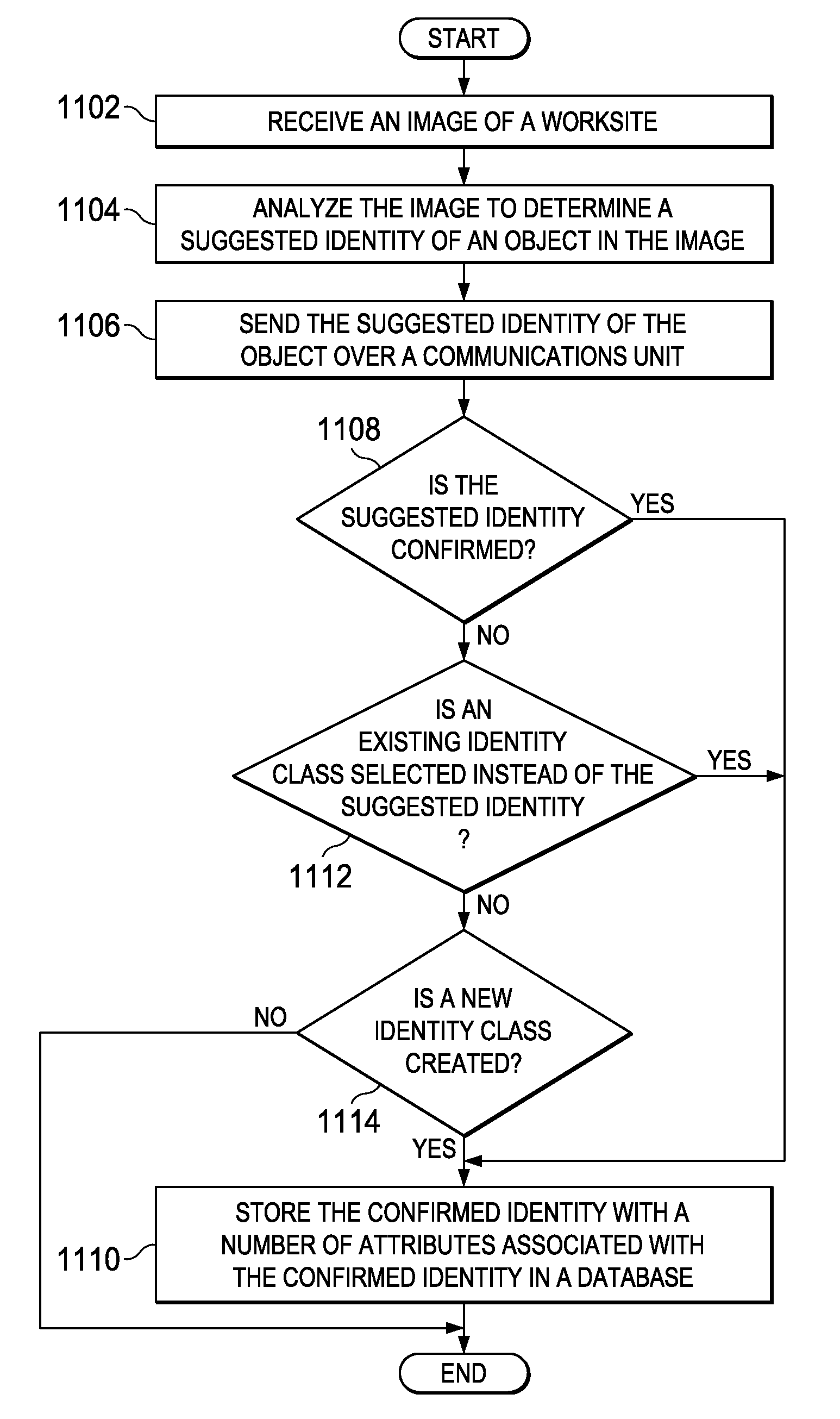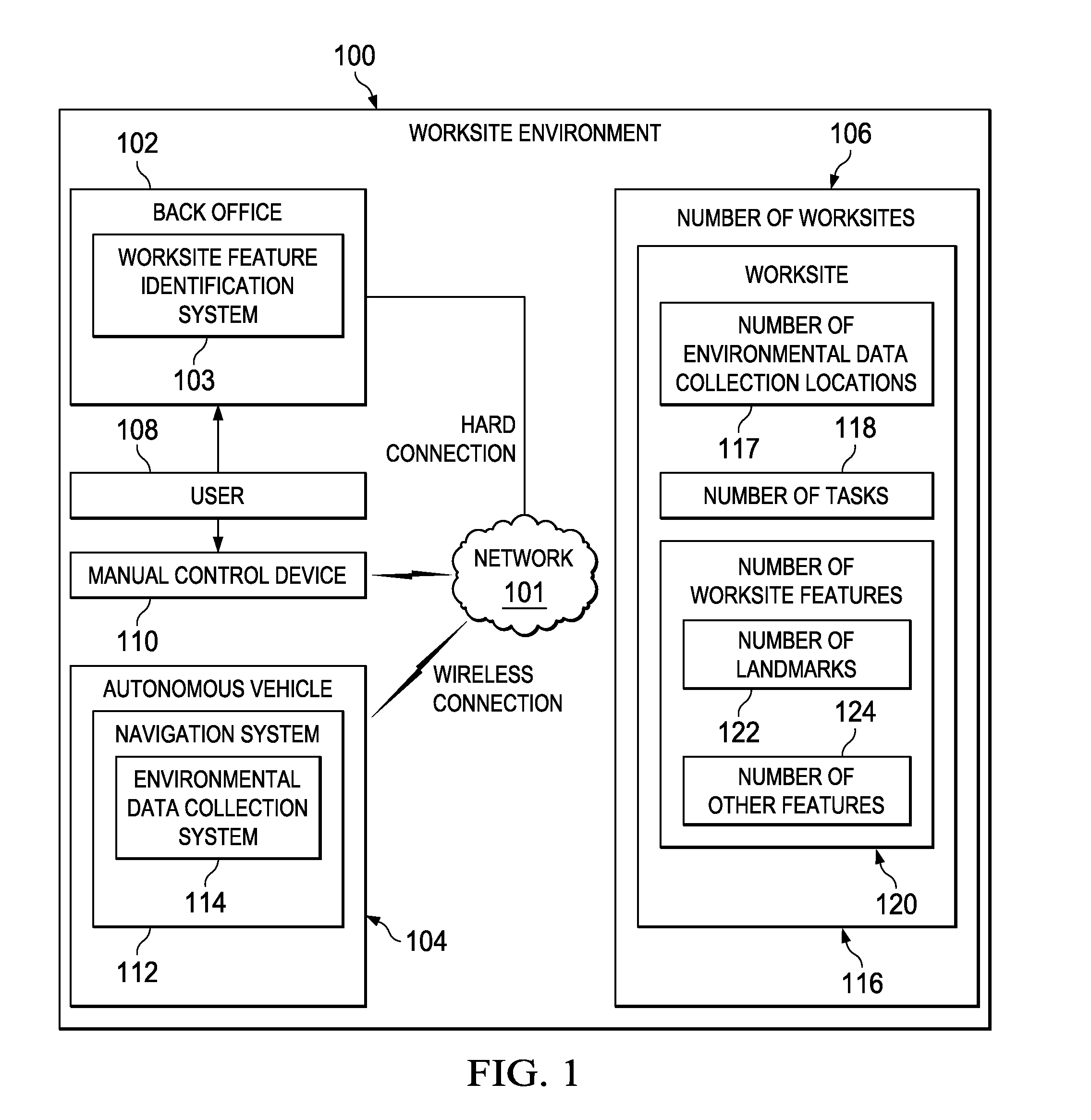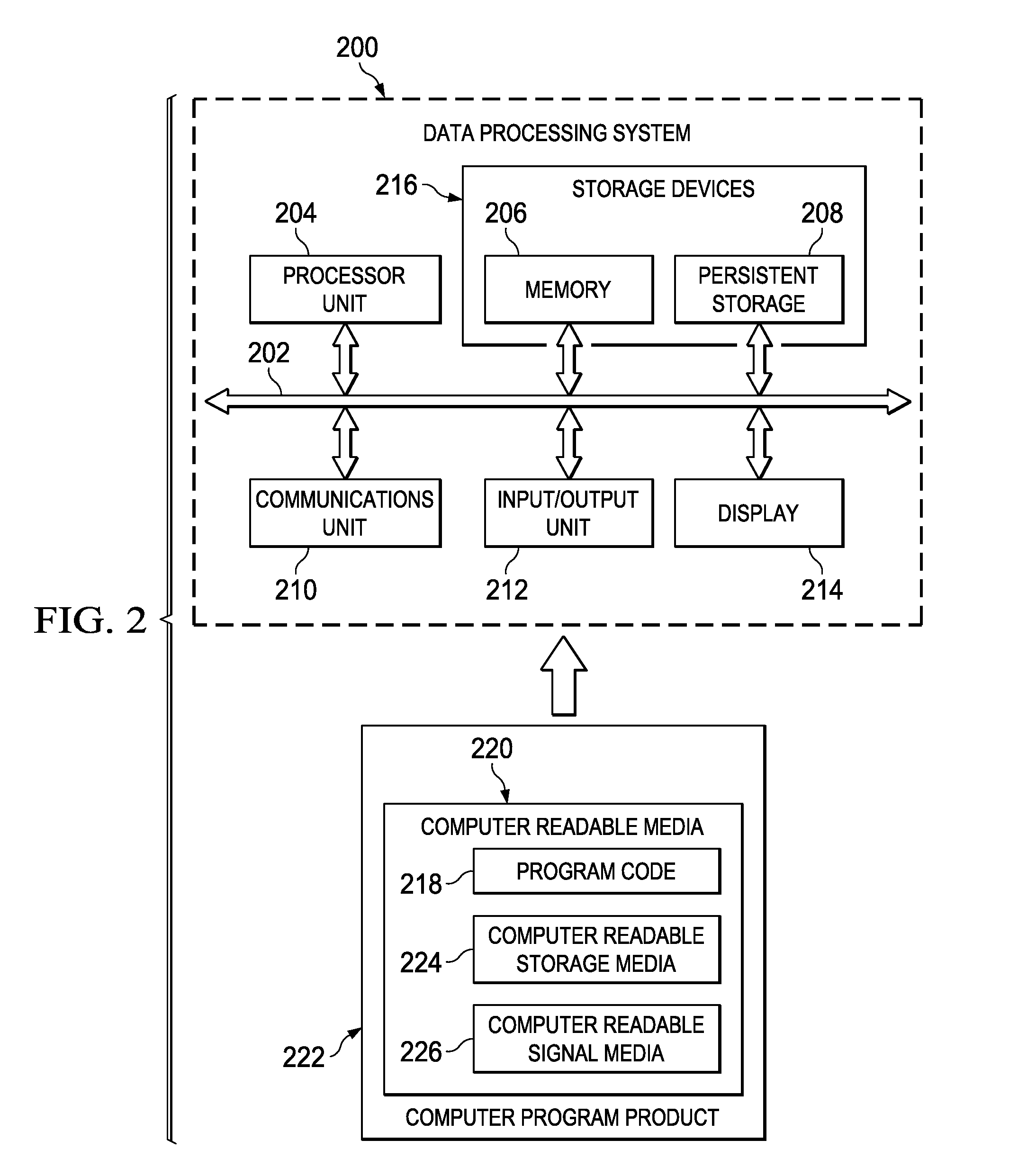Automated tagging for landmark identification
a landmark identification and automatic tagging technology, applied in the field of mobile robotic navigation, can solve the problems of inability to identify and distinguish the persistence of landmarks, time-consuming and cost-prohibitive, and lack of landmark positioning stability,
- Summary
- Abstract
- Description
- Claims
- Application Information
AI Technical Summary
Problems solved by technology
Method used
Image
Examples
Embodiment Construction
[0019]With reference to the figures and in particular with reference to FIG. 1, a block diagram of a worksite environment is depicted in which an illustrative embodiment may be implemented. Worksite environment 100 may be any type of worksite environment in which an autonomous vehicle can operate. In an illustrative example, worksite environment 100 may be a structure, building, worksite, area, yard, golf course, indoor environment, outdoor environment, different area, change in the needs of a user, and / or any other suitable worksite environment or combination of worksite environments.
[0020]As an illustrative example, a change in the needs of a user may include, without limitation, a user moving from an old location to a new location and operating an autonomous vehicle in the yard of the new location, which is different than the yard of the old location. As another illustrative example, a different area may include, without limitation, operating an autonomous vehicle in both an indo...
PUM
 Login to View More
Login to View More Abstract
Description
Claims
Application Information
 Login to View More
Login to View More - R&D
- Intellectual Property
- Life Sciences
- Materials
- Tech Scout
- Unparalleled Data Quality
- Higher Quality Content
- 60% Fewer Hallucinations
Browse by: Latest US Patents, China's latest patents, Technical Efficacy Thesaurus, Application Domain, Technology Topic, Popular Technical Reports.
© 2025 PatSnap. All rights reserved.Legal|Privacy policy|Modern Slavery Act Transparency Statement|Sitemap|About US| Contact US: help@patsnap.com



